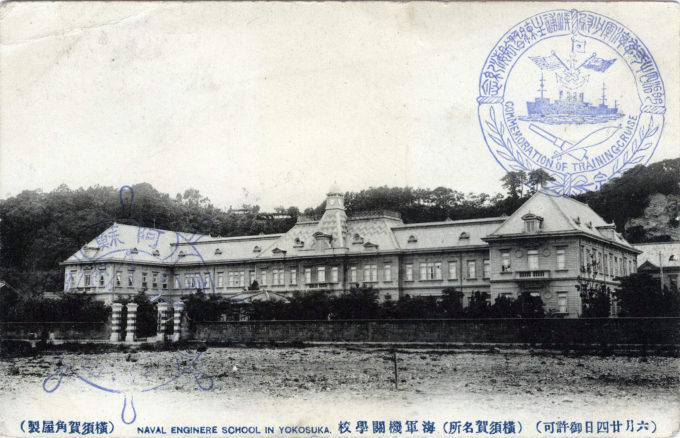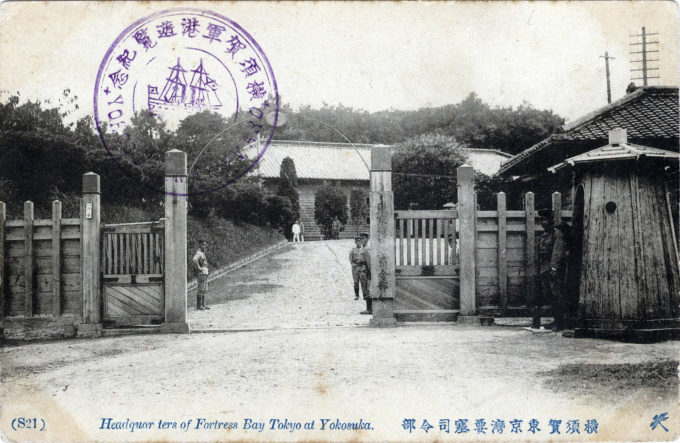
Naval engineering school, Yokosuka, c. 1910. With French funding and expertise, the Tokugawa bakufu first established its naval arsenal and dockyard at Yokosuka in 1866 with hopes that Japan could soon begin building its own naval vessels. Attached to that was an engineering school, to train Japanese in preparation for when they would take over the operations of the arsenal and dockyard. At the school, before the Restoration, two levels of instruction were provided. Samurai were trained as engineers and given instruction in the French language; commoners were trained on-the-job as laborers in the foundry in the morning, then given instruction in draftsmanship and similar subjects in the afternoon.
After the Boshin War and the Meiji Restoration, the new Meiji government took over control of the facilities in 1871. The first dry dock was opened in 1871, and is still in operation today. Japan’s first domestically produced warship, Saiki, was completed the same year.
See also:
Yokosuka Naval Arsenal, 1936.
Yokosuka Naval Base (US), c. 1949.
“After the Restoration of Meiji, there took place in Yokosuka, one after another, an enlargement of the iron works, the change of the same iron works into the Yokosuka Dockyard, and the establishment of a naval station, and with it the place, which was now developing into a town, enjoyed remarkable expansion.
“… Yokosuka, formerly consisting of Yokosuka Village, a half farming and half fishing community, and six other hamlets, gradually became prosperous after the repairing yard had been set up there by the Shogunate in 1864; about 1869, the damp marshes covered by thick bushes were filled in; about 1871, further reclamation was accomplished on part of the coast, and thereby, at last, it showed a resemblance to a small town.
“After the establishment of the Yokosuka Dockyard in 1872 its population was gradually increased, and yet, according to the investigations in 1879, there were only 1,407 houses and 3,422 men. In 1884, the naval station was removed there from Yokohama; then, in May, 1889, the Yokosuka Dockyard was renamed the Shipbuilding Branch of the Yokosuka Naval Station, when, in accordance with the expansion of shipbuilding work, workmen, merchants and manufacturers and whoever was connected therewith moved there. This naturally resulted in expansion and the increase of houses and population.
“… The war with Russia during 1904-1905 necessitated building big battleships, and caused a further enlargement of the scale of the dockyard and the multiplication of officials, workmen, merchants, manufacturers, so that the town was brought at last to a municipal organization in 1907. Since then the houses and population of the city have annually increased until it reached, according to the investigation made at the end of 1912, 12,695 houses and 70,210 inhabitants, and at the present time it is said to have around 80,000.”
– Military Industries of Japan, Issue 3, by Norimoto Masuda & Ushisaburō Kobayashi, 1922


